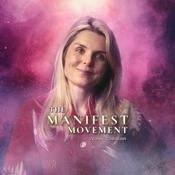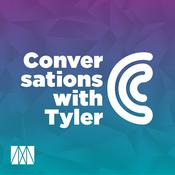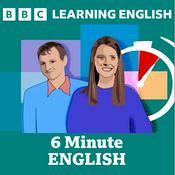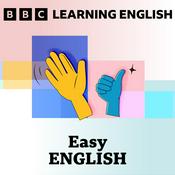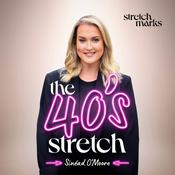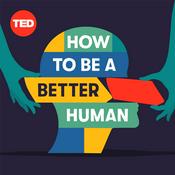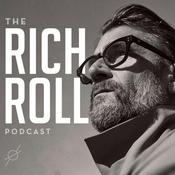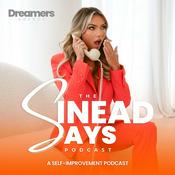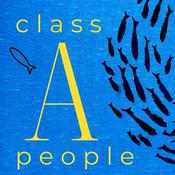467 episodes
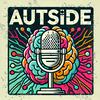
Episode 456: First Person—Frame by Frame
24/12/2025 | 11 mins.
Today’s episode addresses the issue of vicarious trauma and the invisible toll of forensic work. The author of the source article, Dr. Jaime Hoerricks, explains that the piece was initially written in April 2025 for a forensic science journal in response to a formal call for scholarship on this specific type of trauma but was ultimately declined without comment. Dr. Hoerricks argues that the work provides a situated account of bearing witness to traumatic material repeatedly through technology, often alone, and emphasises a form of mediated trauma absorbed not in the field, but whilst handling and refining evidence. She explores how neurodivergence and non-traditional processing of memory profoundly shape how traumatic material is held, suggesting that institutional support often fails those whose experiences do not fit standard procedural check-ins or talk-based disclosure. Ultimately, she aims to make structurally invisible exposure legible and coherent, calling into question the conventions of forensic publishing regarding trauma.Here’s the link to the source document: https://open.substack.com/pub/autside/p/first-person-frame-by-frameLet me know what you think.The AutSide is a reader-supported publication. To support my work, consider becoming a paid subscriber. This is a public episode. If you'd like to discuss this with other subscribers or get access to bonus episodes, visit autside.substack.com/subscribe

Episode 455: Two Roads Out of Childhood—Vulture Capitalism and Autism
23/12/2025 | 11 mins.
Today’s episode examines the concept of an adult life lived cohesively and collaboratively, where work aligns with temperament and community support exists, contrasting this with a precarious reality for many autistic and AuDHD individuals. The author of the source article, Dr. Jaime Hoerricks, also discusses the failure of regulation and enforcement concerning what is implied to be experimental interventions targeting children. Dr. Hoerricks critiques “vulture capitalism” for surviving scrutiny by simply outlasting critics’ attention, allowing harmful, unproven clinics and practices to continue operating despite expert acknowledgment of ethical concerns. Furthermore, she notes the disparity between the money extracted by these unproven treatments and the widespread lack of basic necessities like housing and healthcare for many autistic adults. Ultimately, she highlights the quiet violence of inaction, where harm is noted yet permitted, making autistic individuals and their families victims of systemic neglect.Here’s the link to the source article: https://open.substack.com/pub/autside/p/two-roads-out-of-childhood-the-futureLet me know what you think.The AutSide is a reader-supported publication. To support my work, consider becoming a paid subscriber. This is a public episode. If you'd like to discuss this with other subscribers or get access to bonus episodes, visit autside.substack.com/subscribe

Episode 454: Gestalt Memory, HRT, and Writing from the Body
22/12/2025 | 9 mins.
Today’s episode explores a Substack post by Jaime Hoerricks, PhD, titled “When the Files Reopen: Gestalt Memory, HRT, and Writing from the Body,” which outlines the nature of their writing project. Dr. Hoerricks clarifies that this work, hosted on their newest Substack Sensual Residue, should not be mistaken for traditional memoir, confession, or a retrospective erotic archive, even though the content is bodily and explicit. Instead, she explains that the writing documents a gestalt memory system reopening files that were previously inaccessible due to a lack of safety, HRT (hormone replacement therapy), and material security. She focuses on the change in access to whole, sensory memories and defines the writing process as seeking coherence, not closure, personal instruction, or an explanation of a former self.Here’s the link to the source article: https://open.substack.com/pub/autside/p/when-the-files-reopen-gestalt-memoryLet me know what you think.The AutSide is a reader-supported publication. To support my work, consider becoming a paid subscriber. This is a public episode. If you'd like to discuss this with other subscribers or get access to bonus episodes, visit autside.substack.com/subscribe

Video Episode 02: A Life That Cannot Be Pulled Apart
21/12/2025 | 16 mins.
A conversation between Cathy and I about gestalt being—not as theory, but as lived coherence. Family scripts, shared meaning, professional erasure, and the quiet refusal to dismantle what already works. Evidence lives here.Some conversations don’t begin with a question. They begin with pressure—end of term, accumulated witnessing, too many whole things arriving at once. This episode came from that place. Not a neat idea. Not a position statement. A saturation point.What you’ll hear is not an argument for gestalt processing. It’s a life lived inside it. Whole-to-part knowing that does not queue politely, that does not wait for permission, that arrives fully formed and only later reveals its internal weather. Language here is not a tool being demonstrated; it is a medium being breathed. The examples—family scripts, shared suffixes, a single word that carries an entire day—are not anecdotes offered as evidence. They are the evidence.Again and again, the conversation brushes up against a familiar violence: the demand to prove what can only be recognised. To extract justification from intimacy. To dismantle meaning until nothing living remains. Randomised control trials are invoked like holy water, as if relational coherence were a contaminant rather than the very condition under which language works at all.There is grief here too—quiet, professional, cumulative. The experience of moving through autism spaces where one’s own mind is a ghost. Where lived knowledge is treated as disruption. Where attunement is mistaken for bias, and presence for threat. And still, despite that, there is care. Families holding shared meaning across decades. Educators recognising thresholds instead of deficits. A refusal to pull apart what is keeping someone whole.This is not a podcast about explaining autism. It is about refusing to disappear from the explanation.If you listen slowly, you may notice that nothing here is asking to be dismantled. It is asking, instead, to be allowed to remain intact.As a programme note, we’re taking the holiday off to be with family and friends. Cathy and I will return after the holiday. Enjoy.The AutSide is a reader-supported publication. To support my work, consider becoming a paid subscriber. This is a public episode. If you'd like to discuss this with other subscribers or get access to bonus episodes, visit autside.substack.com/subscribe

Episode 453: Refusal as Harm—Autistic Boundaries and Forced Repair
21/12/2025 | 11 mins.
Today’s episode focuses on the concept that setting boundaries, particularly within autistic, queer, and trans contexts, is frequently misinterpreted as causing harm or acting with cruelty. The author of the source article, Dr. Jaime Hoerricks, argues that acts of refusal, pausing, or remaining unresolved should often be understood as ethical acts of self-care and compassion, rather than failures in relationships. Dr. Hoerricks illustrates how a calmly set boundary or an explanation’s absence can cause a perceptible, though not dramatic, shift in a social interaction, leading immediately to negative labels such as “cold” or “unreasonable.” Ultimately, she aims to reframe stepping back and maintaining personal limits as a moral necessity against the pressure for forced relational repair.Here’s the link to the source article: https://open.substack.com/pub/autside/p/when-refusal-is-read-as-harm-autisticLet me know what you think.The AutSide is a reader-supported publication. To support my work, consider becoming a paid subscriber. This is a public episode. If you'd like to discuss this with other subscribers or get access to bonus episodes, visit autside.substack.com/subscribe
More Education podcasts
Trending Education podcasts
About The AutSide Podcast
Listen to The AutSide Podcast, The Manifest Movement and many other podcasts from around the world with the radio.net app

Get the free radio.net app
- Stations and podcasts to bookmark
- Stream via Wi-Fi or Bluetooth
- Supports Carplay & Android Auto
- Many other app features
Get the free radio.net app
- Stations and podcasts to bookmark
- Stream via Wi-Fi or Bluetooth
- Supports Carplay & Android Auto
- Many other app features


The AutSide Podcast
download the app,
start listening.
